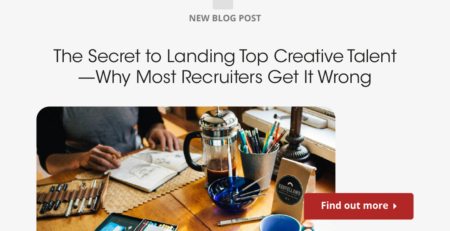A Creative’s Guide to Networking: The Playbook for Genuine Connections
Why Networking Matters to Creatives
Networking can feel slippery for creatives. We’re taught to let the work speak for itself, yet opportunities often arrive through people who speak for us. In practice, networking is the bridge between your craft and the collaborations, referrals, and gigs that stretch your skills and sustain your career. It’s not a sales pitch; it’s a conversation that expands your creative world.
Healthy networks look more like ecosystems than ladders. They thrive on reciprocity-ideas, introductions, and encouragement circulating among peers, clients, mentors, and communities. When you approach networking as relationship-building, you become a node that attracts and creates value. If you’d like a primer on building belonging and supportive environments, explore the role of community at work here: community in the workplace.
Let’s also normalize the inner chatter that can block action. Perfectionism, comparison, and self-doubt whisper that you’re not ready or visible enough. You’re not alone-many creators navigate this. If confidence is wobbling, this guide on beating impostor feelings can help you get back to center: overcoming impostor syndrome.
Networking becomes sustainable when you turn it into a system: small, frequent touchpoints; conversations you enjoy; and a clear purpose. Protecting your bandwidth and boundaries is part of this system. For balance and sustainable habits, see these ideas on aligning work with life: work-life balance practices.
We now live in a hybrid world-coffee chats and gallery nights mix with Discord servers and async DMs. That’s good news for creatives who thrive in different settings and time zones. If you’re exploring location-independent paths, this resource offers context on remote-first lifestyles: what digital nomads should know.
- How do I start networking as a creative introvert without feeling salesy?
- Which platforms, events, and communities yield the best results for designers, writers, and artists?
- What should my elevator pitch and portfolio include to spark great conversations?
- How do I follow up and nurture relationships without being pushy?
- How can I network effectively online and in remote-first communities?

How do I start networking as a creative introvert without feeling salesy?
Start by reframing networking from “pitching” to “helpful curiosity.” Your job isn’t to sell yourself; it’s to learn, connect dots, and offer small wins to people you genuinely respect. This mindset reduces pressure, keeps your integrity intact, and actually makes you more memorable.
Choose environments that match your energy. Smaller, curated gatherings, studio tours, critique circles, and volunteer roles at events create natural conversation starters and less noise. If in-person anxiety peaks around what to wear, a little prep goes a long way-these practical tips keep it effortless: work clothes do’s and don’ts.
Set micro-goals so success isn’t binary. Instead of “work the room,” define two or three specific outcomes you can control. This turns a daunting evening into a sequence of achievable steps.
- Introduce yourself to three people and ask each about a current project.
- Exchange contact info with at least two peers you’d happily refer work to.
- Offer one helpful resource or introduction to someone you just met.
Prepare short conversation scaffolds. A 30-60 second self-introduction plus 3–5 open-ended questions is enough. If video feels safer than live intros, record a private “hello” once and use it as a warm opener before meetings; these pointers can help you look and sound your best on camera: video interview guide.
Use a simple three-sentence intro to avoid rambling: context, craft, credibility. That last part can be a quick proof point-awards, outcomes, or a client quote. If you need stronger social proof, gather and display them intentionally: collecting customer testimonials.
Manage your energy deliberately. Arrive early (quieter rooms), take short breaks, and give yourself permission to leave on time. Anchor your evening with one supportive friend or colleague, then split up and reconvene to compare notes.
Use “warm doors.” Instead of approaching the busiest person, talk to hosts, organizers, or volunteers-people who naturally make introductions. If you compliment their event and ask, “Who here might be interested in X?” you’ll be handed to the right people without cold approaches.
Lean on digital touches if live small talk drains you. A thoughtful message before or after the event-referencing something you appreciated-often leads to deeper 1:1s where introverts shine.
If the idea of on-the-spot conversation feels intimidating, practice low-stakes scripts and active listening skills. Negotiation fundamentals such as mirroring, labeling feelings, and asking calibrated questions are invaluable in creative chats-see these techniques: negotiation skills for success.
Finally, treat every conversation like a seed, not a sale. The goal is to earn the next conversation. When you focus on learning and helping, “salesy” disappears-and relationships grow.
Which platforms, events, and communities yield the best results for designers, writers, and artists?
Not all rooms create equal value. The best spaces concentrate the people you want to meet and the problems you love to solve. Look for rooms where decision-makers, collaborators, and your ideal audience already gather-then show up consistently.
Use a simple ROI heuristic: Will this room teach me something, pay me, or introduce me to people who can? Prioritize events that hit at least two of those three. Mix large conferences (serendipity), niche meetups (depth), and peer circles (support).
Designers tend to win in product meetups, startup demo nights, brand and packaging summits, and discipline-focused Slack groups. If you want to be conversant in the tools your peers use, this roundup can guide your choices: prototyping tools for UX/UI designers.
Writers and content strategists often find traction in marketing communities, newsletter collectives, and SEO or brand storytelling groups. Before you pitch yourself, ensure your own site signals clarity and taste-this checklist helps you refresh it: make your website more interesting.
Artists and illustrators benefit from gallery talks, local art walks, online portfolio review nights, and industry-specific Discord servers. Look for juried shows, publication open calls, and collaborations with indie brands where visual voice matters.
Tech-adjacent creatives should consider AI, product, and creative-tech communities. They’re fertile ground for cross-disciplinary work-and fast introductions. To orient yourself, start with foundational primers: learn about AI.
Virtual conferences and webinars remain excellent for extending your reach across time zones. Treat them as real rooms: turn on the camera when appropriate, use the chat thoughtfully, and follow up within 24 hours. Here’s why virtual formats can be powerful: reasons to consider video interviews.
Keep an eye on emerging spaces. VR meetups and metaverse installations are becoming viable discovery channels for some creative niches. If you’re curious about where executive attention is pointing, this primer offers context: metaverse for business leaders.
Hybrid and travel-based communities-from co-working residencies to pop-up labs-can help you build dense networks fast. Be intentional: attend with a project or question so conversations stay focused.
Make final choices with a scorecard: audience fit, access to decision-makers, opportunity type (paid vs. learning), and your personal energy levels. Keep what compounds; prune the rest.
What should my elevator pitch and portfolio include to spark great conversations?
Your pitch is a portable story about the value you create. It answers three questions in under 30 seconds: who you help, what you make possible, and why you’re credible. Your portfolio then proves that story with clear, compelling evidence.
Start with a flexible 3-line template you can tailor for any room. Keep each line short and specific. If you need inspiration to sharpen your professional profile, this guide is packed with practical examples: kickstart your professional profile.
Words matter. Cut jargon, use verbs, and speak to outcomes. The skill of writing with clarity will elevate every part of your presence-from bios to case studies. For practical craft tips, check out: UX copywriting principles.
Design your portfolio for skimmers. Lead with the strongest 3–5 projects, each framed by the problem, your role, constraints, and measurable outcomes. Hiring managers often want to see process, not just polish-this breakdown shows what they scan for: what employers want in UX/UI portfolios.
End each project with a specific call-to-action: “If you’re launching X, here’s how I can help.” Make it easy to contact you via email, DM, or calendar link. Optional: include a short “about” video that humanizes your work.
Presentation matters. Use generous whitespace, legible type, and consistent hierarchy so your work breathes and your narrative flows. If you need a nudge on readability details, skim: UI typography essentials.
Show social proof-quotes, before/after snapshots, and metrics tied to outcomes (conversions, engagement, revenue). Even one credible metric per project dramatically increases trust.
Tailor your portfolio to sectors you’re courting. For example, show process artifacts for product teams, print specs for packaging clients, or storyboards for video work. Speak the language of the buyer.
For live pitches or investor-style creative proposals, a concise deck helps you control the arc. This resource will help you craft one: creative investment pitch deck.
Avoid common pitfalls: too many projects, unclear roles, weak outcomes, or slow-loading pages. If you’re a web designer, this checklist will save you from costly errors: mistakes web designers make when job hunting.
How do I follow up and nurture relationships without being pushy?
Follow up within 24–48 hours while the conversation is fresh. Reference something specific you discussed, add one helpful resource, and suggest an easy next step (a 15-minute chat, an intro, or simply “keep me posted”). Brevity and relevance are your guardrails.
Use a lightweight system to remember details and dates. A simple spreadsheet works, but dedicated tools make it easier to log notes and schedule nudges-see what a modern contact system can do here: CRM software basics.
Adopt a friendly “3–5–30” cadence for new contacts. It’s human, easy to remember, and respects attention.
- Day 3: A thank-you with one relevant resource.
- Day 5: A quick check-in or micro-offer (feedback, intro, template).
- Day 30: A value-laden update or invitation.
Lead with usefulness. Share an article, a template, a job lead, or a shout-out. Helping their goals first keeps the relationship generous. Over time, these small acts compound into reputation and referrals-classic word-of-mouth dynamics.
Trust grows when you do what you say you’ll do, consistently. Set expectations, meet them, and own mistakes quickly. For a deeper look at the mechanics of trust, explore: building trust.
Respect attention. Avoid double-messaging across channels, and don’t assume urgency. If your contact is drowning in meetings, your restraint will stand out. These ideas can help you avoid overcommitting calendars: meeting overload.
When you do make an ask, be specific and easy to say yes to. “Could you introduce me to one founder in food-and-bev who’s launching in Q1?” shows clarity and respect. For tone and presence in asks, this primer helps: leadership advice.
Read the room. Power dynamics, culture, and context shape how messages land. Calibrate formality and frequency accordingly-this overview offers useful signals: power dynamics at work.
If something goes sideways-missed deadlines, miscommunications-repair quickly and clearly. Ownership and a proposed remedy do wonders. For more on maintaining healthy professional ties, see: employee relations.
Finally, document what you learn: who you enjoy working with, which conversations energize you, and which rooms yield opportunities. Let that feedback loop guide your future outreach.
How can I network effectively online and in remote-first communities?
Online networking works best when you treat platforms like neighborhoods. Each has norms, tempos, and expectations. Show up regularly, contribute value, and be a good neighbor; over time, your “digital proximity” compounds into trust.
Learn to work asynchronously. Post thoughtful updates, respond in threads, and use shared docs or looms to reduce meeting fatigue. These habits mirror what great remote teams already do-this guide will help you adapt: managing a remote workforce.
Publish “proof of work” consistently. Share work-in-progress, frameworks, and behind-the-scenes process notes. This invites conversation and makes outreach warmer because people already understand your style and strengths.
Partner with intermediaries who already have the relationships you want-talent platforms, boutique recruiters, and agencies can be multiplier effects. Here’s how to evaluate and collaborate with them: using a staffing agency.
Think of your presence as a storefront. Clear offers, pinned portfolios, and one strong CTA channel attention. If you also sell services or products directly, these tactics are helpful: sales for creatives.
Borrow ideas from marketing funnels. Offer a lead magnet (template, checklist), nurture with a newsletter, and invite people to a short intro call. For strategy ideas on turning attention into conversations, see: recruitment marketing.
DM etiquette matters: ask permission before sending links, keep messages under five sentences, and offer context for why you’re reaching out. A single thoughtful line beats a pasted pitch every time.
Make inbound easier by polishing your profiles and pinning relevant work. If you’re independent, this guide helps you position yourself clearly and attract the right conversations: market yourself as a freelancer.
Blend spaces: post a build thread on LinkedIn, discuss it in a Slack community, and host a tiny Zoom critique. Cross-pollination creates momentum across platforms and introduces you to complementary networks.
Rotate experiments quarterly-test one new platform or format-and double down on what generates the most energy and introductions. Keep the rest simple.
Conclusion: Put Your System to Work
Networking rewards consistency and generosity. Find rooms where your curiosity lights up, practice a simple intro, and leave every interaction a little better than you found it. Over time, the map of your creative relationships becomes your greatest asset.
As you grow, you may cross into adjacent fields-motion designers moving into product, illustrators into editorial, writers into UX. If that’s you, this roadmap can smooth the leap: building a career in a new industry.
Strong networks often lead to interviews and collaborations. When those invites arrive, you’ll want to be ready-this guide covers preparation, presence, and common questions: mastering job interviews.
Practice is your superpower. Run small, frequent reps-comment thoughtfully, make introductions, and host tiny sessions. If you want structure for creative group sessions, try these: brainstorming rules.
Relationships also buffer downturns. If the market tightens, lean into community, share resources, and ask better questions. This prep can help you stay proactive: preparing for a recession.
Finally, remember that many beloved creative careers started as scrappy underdogs. Lead with character, deliver with craft, and let your network carry the story forward-more on that spirit here: the underdog brand.
In today’s competitive market, finding the right creative and marketing expert can be a challenge. But with icreatives, you’re in experienced hands. With 37 years in staffing and a track record of matching more than 10,000 employees to over 1,000 companies worldwide, we know how to connect you with the best. Plus, you only pay if you hire-there’s no risk, only results. Ready to find your perfect creative or marketing expert? HIRE WITH ICREATIVES today!













Leave a Reply